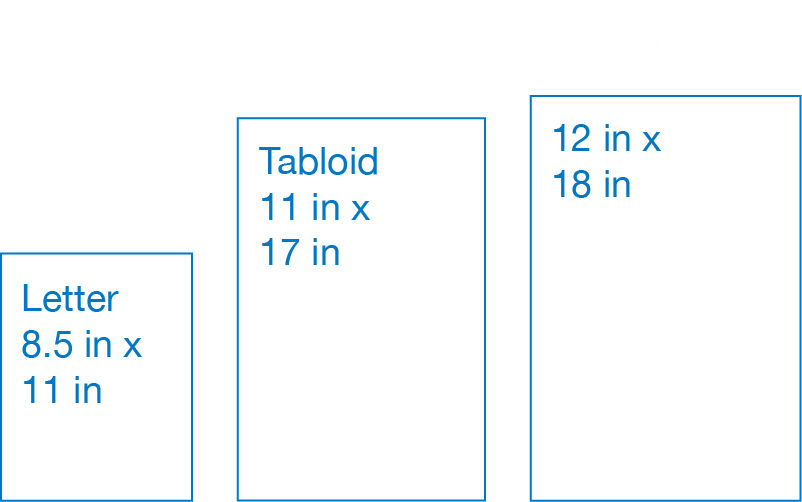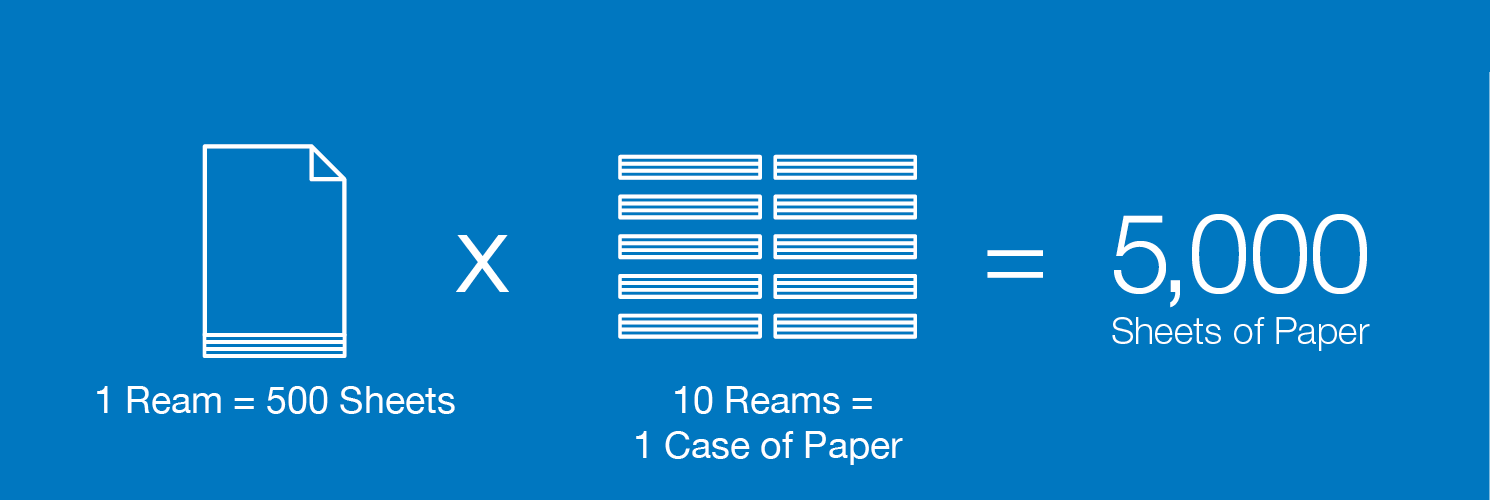What is Copy Paper?
Copy paper is a versatile, lightweight paper that can be found in a copy machine, fax machine, or at the corner of a desk as scrap paper to jot down ideas. One of the most popular weights of copy paper is 20 lb. weight. Stupendous in its simplicity, copy paper typically lacks the specialty finish or composition of glossy photo paper, inkjet paper, or laser printer paper.
Facts About Copy Paper
Check out some frequently asked questions about copy paper and get a crash course
What are standard copy paper measurements?
The most common size of copy paper is 8.5" x 11" (AKA “letter size”). Most of your everyday office documents, letters, and faxes will be printed on this size of paper.
The thickness of your copy paper depends on its weight, which is labeled on the package. Most copy paper has a weight that ranges from 20lb. thickness to 24lb. thickness for everyday printing needs. For double-sided printing, use a 28lb. to 32lb. paper weight.
Does copy paper come in other sizes or dimensions?
While 8.5" x 11" is the most common type of copy paper, there are other sizes of copy paper that you will frequently see in an office setting, too. These sizes include 11" x 17" and 12" x 18". These sizes may be used for printing small poster-sized documents.

Common Copy Paper Sizes:
How much copy paper is in a case?
Paper typically is sold by the ream, which is 500 sheets. There are 10 reams in a case of paper. As a standard, there are a total of 5,000 individual sheets contained in a case of paper.

How is copy paper made?
Copy paper is made from a fibrous substance known as cellulose that comes from trees. The cellulose is diluted in water.
- Fun fact: It takes nearly 100 pounds of water to make one pound of paper.
Chalk is then used to fill in spaces between the fibers and give a brighter, whiter hue to each sheet. Fibers are then ground into even finer microfibers.
Once the right consistency is achieved, the pulpy paper substance is then spread on a screen. Depending on the desired level of copy paper brightness, tints of blue and/or purple dye are used to transform the naturally yellow-tinted pulp to a whiter shade.
To extract the water and leave behind “paper,” pulp is put through a machine that squeezes out the water. Then, it’s put into an oven to further extract water. From there, the paper is saturated with starch to strengthen it and smooth away any stray fibers. Finally, the copy paper is dried and pressed to ensure consistency of weight or thickness.
What is carbon copy paper? How does it differ from regular copy paper?
Carbon copy paper is very different from the regular copy paper used in a printer. In the days before printing technology became accessible to most offices, carbon paper was used to print duplicates of a handwritten or typed page of text.
Carbon copy paper was composed of three different colored sheets bound together: a layer of white paper on top, followed by one sheet of pink, then another sheet of yellow. The paper was coated with a layer of carbon dry ink that was adhered to the sheets with wax. Pressure from a pen or typewriter would then transfer that ink to the other sheets. When the individual pages were pulled apart, the handwritten or typed work was imprinted on all three sheets without the writer or typist having to duplicate their handiwork on additional pages.
What is carbonless copy paper? What can I use it for?
Carbonless copy paper is similar to carbon paper in that it has the same white-pink-yellow triple sheet construction that transfers the original copy to the bottom two sheets. The only difference is, instead of carbon-based ink, these sheets (created by chemists Lowell Schleicher and Barry Green) have a specially formulated, micro-encapsulated dye on the back of the white sheet and a coating of clay at the front of the bottom (yellow) sheet. Pressure from a pen or typewriter key transfers this ink to all three copies at the same time—minus the carbon.